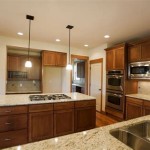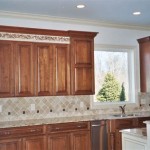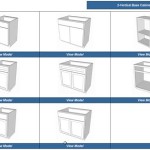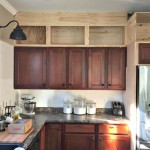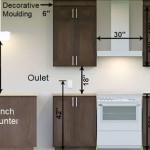The Enduring Appeal of Maple Wood Kitchen Cabinets
Maple wood has long been a favored choice for kitchen cabinetry, prized for its durability, versatility, and classic aesthetic. Its subtle grain patterns and smooth texture lend themselves to a variety of design styles, from traditional to contemporary. This article explores the key attributes of maple kitchen cabinets, offering insights into their advantages, considerations, and design possibilities.
Durability and Strength
Maple is a hardwood known for its density and resistance to wear and tear. This inherent strength makes it an excellent choice for kitchen cabinets, which endure frequent use and exposure to moisture and heat. Maple cabinets hold up well against daily impacts, reducing the risk of dings, scratches, and dents. This durability contributes to the longevity of maple cabinetry, making it a worthwhile investment for homeowners.
Versatility in Design
One of the most significant advantages of maple cabinets is their design versatility. The wood's fine, uniform grain and smooth surface provide an ideal canvas for various finishes. Maple readily accepts stains, allowing homeowners to achieve a wide range of colors, from rich dark browns to light, natural hues. This adaptability makes maple cabinets suitable for diverse kitchen styles, seamlessly integrating into traditional, transitional, and contemporary designs.
Variety of Grain Patterns
While maple is known for its generally smooth and uniform grain, several variations exist, offering subtle nuances in appearance. Some common maple grain patterns include birdseye maple, characterized by small, swirling "eyes," and curly maple, featuring a wavy, three-dimensional figure. These unique grain patterns add visual interest and character to the cabinetry, providing homeowners with options to personalize their kitchen design.
Light and Bright Aesthetics
Maple's natural color ranges from creamy white to light tan, creating a bright and airy atmosphere in the kitchen. This light hue reflects natural light, making the space feel larger and more open. Lighter-colored maple cabinets are particularly well-suited for smaller kitchens or those with limited natural light, as they help maximize the sense of spaciousness.
Cost-Effectiveness
Compared to some other hardwood options like cherry or walnut, maple offers a relatively cost-effective solution for kitchen cabinetry. While the price can vary based on factors such as the specific type of maple, the construction method, and the finish, maple generally falls within a mid-range price point, making it an accessible choice for many homeowners seeking quality and durability without exceeding their budget.
Maintenance and Care
Maple cabinets are relatively easy to maintain, contributing to their long-term appeal. Regular cleaning with a damp cloth and mild soap is typically sufficient to remove dirt and grime. Avoiding harsh chemicals and abrasive cleaners is essential to preserve the finish and prevent damage to the wood. Periodically applying a wood conditioner can help maintain the cabinet's luster and protect it from moisture.
Considerations for Maple Cabinets
While maple offers numerous advantages, certain considerations are worth noting. Maple's hardness, while contributing to its durability, can also make it slightly more challenging to work with during installation. Additionally, maple is susceptible to darkening or yellowing over time, particularly when exposed to direct sunlight. Choosing a UV-resistant finish can help mitigate this effect and maintain the desired color.
Pairing Maple with Other Materials
Maple's versatility extends to its compatibility with other materials in the kitchen. It pairs well with a variety of countertop materials, including granite, quartz, and marble. Furthermore, maple cabinets can be complemented by various hardware finishes, such as brushed nickel, oil-rubbed bronze, and stainless steel. These combinations allow homeowners to create a cohesive and personalized kitchen design that reflects their individual style.
Sustainability and Environmental Impact
Maple is a renewable resource, and many manufacturers prioritize sustainable forestry practices. When selecting maple cabinets, considering the source of the wood and opting for certified sustainable options can contribute to environmentally responsible choices. This ensures the long-term health of forests and minimizes the environmental impact of kitchen renovations.

Amish Maple Unfinished Kitchen Cabinets 10x10 L Shaped Desig

Chestnut Maple Wood Cabinet Factory Kitchen Cabinets

Maple Kitchen Cabinets All You Need To Know

Maple Kitchen Cabinets In Stock Free

Maple Kitchen Cabinets All You Need To Know

8 Modern Maple Wood Kitchen Cabinet Design Ideas

9 Amazing Kitchen Design Ideas Using Maple Cabinets For A Fresh Look Decor

Birch Cabinets Vs Maple Which Is The Right Choice

Maple Wood Cabinets Portland Cabinet Cures

Cabinet Wood Species Maple Cabinets Of The Desert
Related Posts


